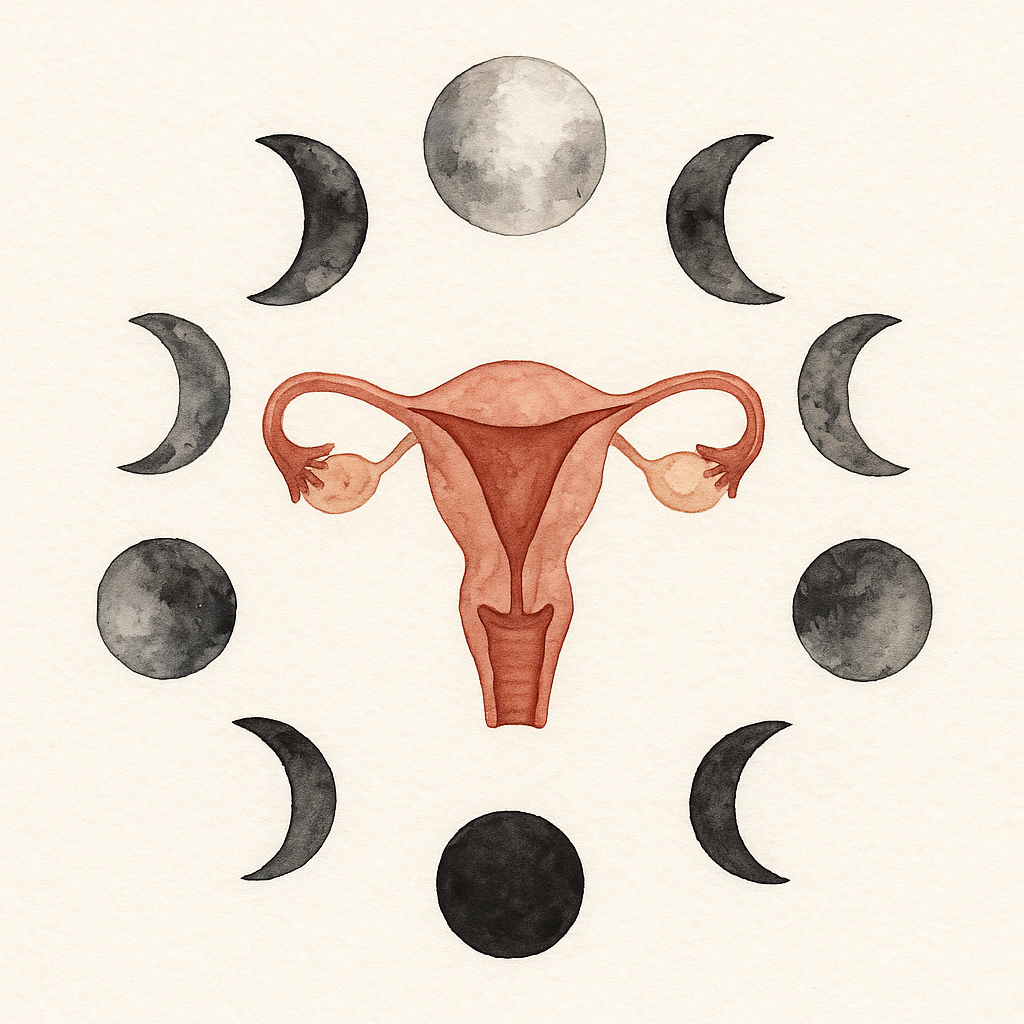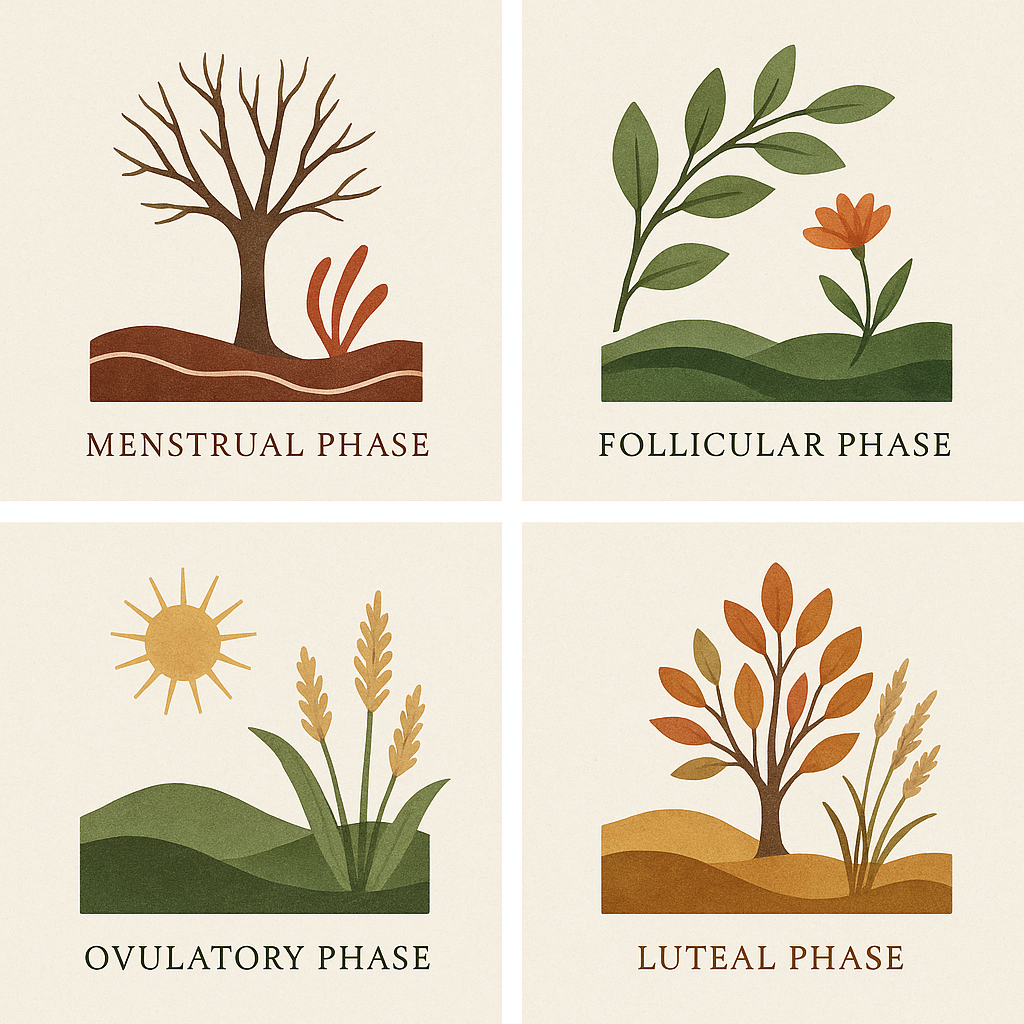What I Wish I Could Tell My 10-Year-Old Self Before She Got Her Period
I don’t remember exactly when I got my first period. Maybe I was eleven or twelve, but the truth is, the memory is blurry, and the only number that really stays with me is ten. It’s not when it happened, but it feels like the age I would go back to—the moment just before the shift. The moment when I was still a girl in body and spirit, unaware that a transition was quietly beginning to stir beneath the surface. The memory isn’t sharp, and I’ve come to realize that the blurriness itself holds a kind of message.
I don’t remember having a big conversation about it. My mother probably told me that I would bleed soon, that it meant I was becoming a woman, and maybe she showed me how to use pads. But that was about it. There was no ritual, no space to ask questions, no sense that something sacred was unfolding. And when the bleeding came, it just came. No fear, no excitement, no celebration. Just something that happened, like brushing your teeth or changing your clothes. That’s how it began.
Looking back now, I see how much I didn’t understand—not just about my body, but about what it meant to move from child to maiden. I didn’t know that this was a rite of passage. That I wasn’t just crossing a physical threshold but stepping into an ancient lineage of women who had walked this spiral path before me. I didn’t know that in other times, in other cultures, this moment would have been honored, even celebrated. I didn’t know that my first bleed wasn’t just a sign of change, it was an initiation.
What I know now is that this first bleed has a name: menarche. It marks the biological beginning of your menstrual cycle—but it also holds deep spiritual and emotional significance. Menarche is the threshold between the world of the child and the journey into womanhood. Not because you instantly become a woman the moment you bleed, but because you begin the long, sacred unfolding into it. Before menarche, you live in the child archetype, innocent, unstructured, shaped mostly by the external world. But when you start to bleed, something shifts. You begin to step into the Maiden, the guiding archetype of early womanhood. It’s not a sudden transformation, but a slow, spiral-like awakening, one where your body becomes a timekeeper, and your inner life begins to speak through rhythm, intuition, and emotion.
I had no idea that I would move through different phases every month, each with its own wisdom and energy. I didn’t know that women operate on a monthly infradian rhythm, while men’s biology follows a 24-hour circadian rhythm. That difference alone explains so much. The world around me, school, work, productivity expectations, was designed for bodies that reset every day. Mine didn’t. My body was moving through a longer, layered rhythm. I wasn’t meant to feel the same every day, and the struggle I felt in trying to keep up with a linear world came from the fact that I was not linear at all. I was cyclical, and that cycle had a rhythm of its own.
If I could sit beside my 10-year-old self now, I would tell her everything. I would explain the rhythm. The four sacred seasons. The archetypes that would live inside her. The energetic shifts that would shape how she felt, thought, moved, and created.
The Four Phases of the Menstrual Cycle: A Seasonal and Archetypal Map
Each month, your body cycles through four distinct phases—each one a reflection of nature’s own rhythm. These phases align with internal hormonal shifts, ancient archetypes, and spiritual energies. Understanding them helps you live in tune with your body and the deeper wisdom it holds.
Inner Winter – Menstruation – The Crone – The Sacred Descent
This is where your cycle begins. Bleeding. Inner Winter. The Crone. Biologically, it’s called the menstrual phase. Spiritually, it’s the time of descent, deep inner wisdom, and stillness.
Your hormones, estrogen and progesterone, are at their lowest. The uterine lining is shedding, and your body is releasing what is no longer needed. This is not just a physical clearing, it is an energetic one. With every cycle, your womb lets go not only of tissue, but of tension, emotion, and stored memory. Bleeding becomes a monthly invitation to release what you’ve outgrown, an embodied ritual of shedding, purification, and renewal.
This phase can come with fatigue, cramps, and a strong call inward. Yet it is not a time of weakness—it is a time of deep power.
The Crone is not an image of decay but of clarity and reverence. She reminds us that we don’t have to be productive to be worthy. That rest is not optional, it is holy. In this descent, we connect with the ancient wisdom within us, the part of us that knows how to grieve, let go, and begin again.
This is not the time to override or dismiss your body. It’s the time to retreat, reflect, and realign.
Inner Spring – Follicular Phase – The Maiden – The Time of Becoming
After bleeding ends, the follicular phase begins. Estrogen starts to rise, signaling the brain to mature ovarian follicles and prepare for ovulation. Your energy begins to lift with it. You step into Inner Spring, the season of the Maiden.
She’s curious, creative, alive with new possibilities. You may feel like a fresh version of yourself. Motivated, open, and ready to engage. But it’s also a vulnerable time.
The Maiden learns through presence, not performance.
Biologically, your body is preparing to release an egg, but spiritually, you are entering a time of emergence. This is the archetypal dawn of the cycle, a return to light, to movement, to self-discovery. Just as nature blossoms after winter, so too do you begin to rise with fresh ideas and renewed clarity.
This is the phase for gentle beginnings, for noticing what feels good, not what feels urgent. You’re biologically building the foundation for ovulation. But energetically, this is still a tender rising, one to approach with care.
Inner Summer – Ovulation – The Mother – The Sacred Outward Flow
Around the middle of the cycle, ovulation occurs. An egg is released from the ovary, and hormones like estrogen and luteinizing hormone are at their peak. This is Inner Summer—the time of fertility, radiance, and receptivity.
You may feel the most capable, the most magnetic, the most outward-facing. The Mother archetype lives here—not just as a biological concept, but as a spiritual state of nurturing, visibility, and generosity.
Ovulation is a time of manifestation and magnetic presence, but it also carries the vulnerability of exposure.
This is the season of outward expression—of holding others, birthing ideas, and sharing your gifts. Biologically, your body is at its most fertile. Energetically, you are designed to connect, to collaborate, to shine. The world feels open here, and so do you.
You may feel drawn to be with others, to collaborate, to lead. Just remember that your value doesn’t come from what you do. It comes from who you are when you’re fully present.
Inner Autumn – Luteal Phase – The Wild Woman – The Wild Truth
After ovulation, your body enters the luteal phase. Progesterone rises to support a possible pregnancy. If fertilization doesn’t occur, it eventually falls, triggering menstruation.
This is Inner Autumn, the season of the Wild Woman. It’s a time of heightened sensitivity and inner truth.
This is the season of truth-telling, where the body amplifies what can no longer be ignored.
This is a phase of emotional refinement. As progesterone peaks, you may feel more introverted, more attuned to what is not working. Spiritually, this is the time of discernment and unraveling. The Wild Woman helps you see what you’ve picked up that you now need to put down.
You may feel more sensitive, but you’re also more intuitive than ever. This is not a breakdown. It’s a breakthrough. The Wild Woman doesn’t stir chaos for the sake of drama. She distills what’s real, and what’s ready to be released.
Reclaiming What Wasn’t Given: A Letter to Your Inner Girl
I wish I had known all of this when I was ten. I wish I had been told that my body wasn’t random or unreliable, but wise. That my emotions weren’t too much. That my cycle was a guide, not a burden.
And while I can’t go back to that version of myself, I can sit with her now. I can tell her everything she didn’t get to hear. I can offer her the story she never got. And so can you.
If you never had a rite of passage, you can create one. You can reclaim your menarche. You can honor your inner child with the truth she deserved.
And if you have a daughter, a goddaughter, a niece—prepare her with presence. Tell her that what’s happening to her body is not something to hide, but something to hold with reverence. Teach her the language of the cycle. Teach her that power doesn’t come from pushing through—but from moving in rhythm.
Because when we remember, we create a path, so they never have to lose theirs. We plant roots of reverence that can grow into something different for them, something softer, wiser, more whole. We hold the stories our own mothers couldn’t tell, and in doing so, we make space for theirs to begin in love.
Acknowledgments
This piece is rooted in my lived experience and inspired by the teachings of women who have guided my return to cyclical wisdom. I offer heartfelt gratitude to Alexandra Pope and Sjanie Hugo Wurlitzer, Tami Lynn Ken, Usha Anandi, Lara Briden and Lisa Lister, whose work continues to light the path of menstrual reclamation.


